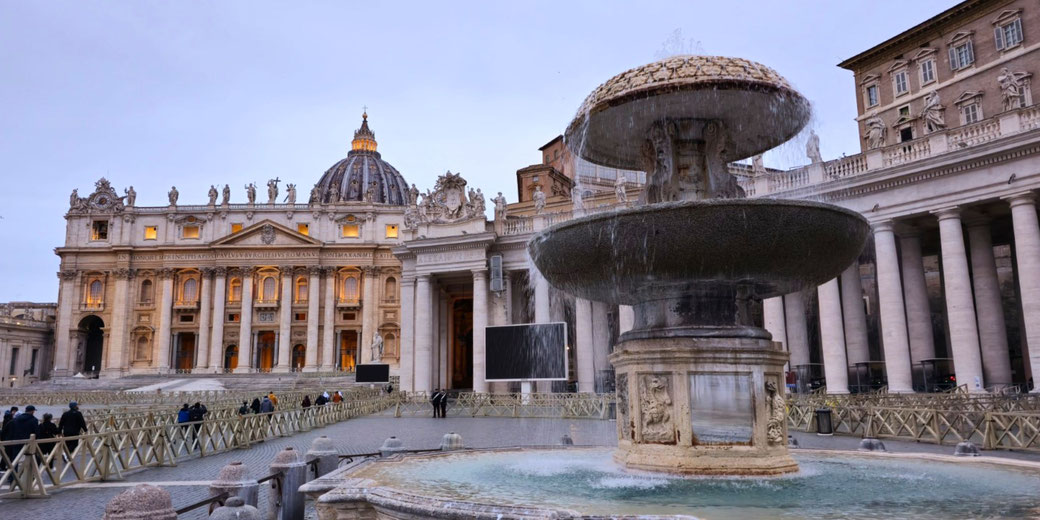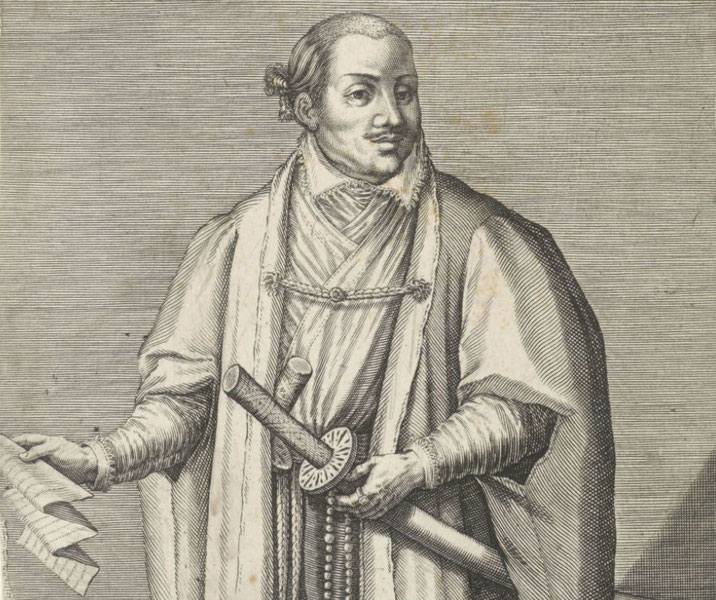The incredible story of the samurai warrior who sailed to Europe to meet the pope

Hasekura Tsunenaga was a figure of extraordinary significance, not only for his role as a samurai but also for his unprecedented diplomatic mission to the Vatican in Rome.
Tsunenaga served under the powerful daimyo Date Masamune, a ruler known for his keen interest in foreign affairs and his ambition to establish diplomatic relations with Spain and the Vatican.
It was under Masamune's command that Tsunenaga embarked on the Keichō Embassy, a diplomatic mission that would take him across the world, from Japan to the heart of Catholic Europe.
This journey, which was the first of its kind, marked a significant milestone in the history of Japanese-European relations.
His early life
Hasekura Tsunenaga, also known as Rokuemon, was born in 1571 into a world on the brink of transformation.
Japan was nearing the end of the Sengoku period, a time characterized by social upheaval, political intrigue, and near-constant military conflict.
His birthplace, the Sendai Domain in the northern part of Honshu, was a region deeply affected by these turbulent times.
Tsunenaga was born into the Hasekura family, a clan of mid-level samurai who served the powerful Date clan.
The Hasekura had a long history of service to the Date, and Tsunenaga was expected to continue this tradition.
His early life was likely marked by rigorous martial training, preparing him for his future role as a samurai.
However, little is known about his childhood and education, as is often the case with historical figures from this period.
His career as a samurai
Hasekura Tsunenaga's career as a samurai began under the rule of Date Masamune, one of the most powerful daimyos of the time.
Masamune was known for his military prowess, strategic acumen, and his interest in foreign cultures, particularly those of Spain and the Vatican.
As a retainer of Masamune, Tsunenaga was deeply involved in the political and military affairs of the Sendai Domain.
Tsunenaga's exact role within Masamune's administration is not entirely clear due to the scarcity of historical records.
However, it is known that he held a position of considerable importance. He was entrusted with the management of a castle town, and he was also involved in the diplomatic endeavors of his lord.
His responsibilities likely included not only military duties but also administrative tasks, reflecting the multifaceted role of samurai during this period.
The journey to Europe
The Keichō Embassy, named after the Keichō era in which it took place, was a historic diplomatic mission initiated by Date Masamune and led by Hasekura Tsunenaga.
This mission, which took place from 1613 to 1620, was the first Japanese diplomatic mission to the Americas and Europe, marking a significant milestone in the history of international relations.
The planning and preparation for the mission were extensive. Masamune commissioned the construction of the San Juan Bautista, a Western-style galleon, to carry Tsunenaga and his delegation across the Pacific.
The delegation included around 180 individuals, including samurai, merchants, and Christian missionaries.
Their journey began in Sendai, from where they sailed to Acapulco in New Spain (modern-day Mexico), marking the first recorded voyage of a Japanese-built ship crossing the Pacific.
From Acapulco, Tsunenaga and his delegation traveled overland to Veracruz and then sailed to Spain, where they were received by King Philip III.
Tsunenaga's audience with the Spanish king was a significant event, demonstrating the growing interest in and recognition of Japan on the global stage.
The final destination of the mission was Rome, where Tsunenaga was received by Pope Paul V.
This meeting was the culmination of the embassy's diplomatic efforts, symbolizing the potential for peaceful relations and cultural exchange between Japan and the West.
Tsunenaga's audience with the Pope was a historic event, marking the first time a Japanese envoy had been received by the head of the Catholic Church.

What happened when Hasekura Tsunenaga met the pope?
During the audience, Tsunenaga presented the Pope with a letter from Date Masamune, expressing his desire for trade and diplomatic relations.
Tsunenaga also reportedly requested the dispatch of missionaries to Japan, reflecting Masamune's interest in Christianity.
The Pope responded positively to Tsunenaga's requests, and the samurai was even baptized in Spain before his audience with the Pope, taking the Christian name Francisco Felipe Faxicura.
However, the Pope did not officially establish diplomatic relations, as he wanted to confirm the sincerity of the Japanese rulers' intentions towards Christianity.
His return to Japan and later life
After seven years abroad, Hasekura Tsunenaga and his delegation returned to Japan in 1620.
They brought back with them a wealth of knowledge and experiences from their interactions with various cultures and societies.
However, the Japan they returned to was not the same as the one they had left.
The Tokugawa shogunate, wary of the growing influence of Christianity and foreign powers, had begun to implement policies of isolation and persecution of Christians.
Tsunenaga's return was met with mixed reactions. On one hand, his mission had been a diplomatic success, establishing relations with Spain and the Vatican and bringing back valuable knowledge and insights.
On the other hand, the growing suspicion towards Christianity and foreign influence cast a shadow over his achievements.
In his later life, Tsunenaga faced the challenges of navigating this increasingly complex and hostile environment.
He continued to serve Date Masamune and his successors, managing his fiefdom and navigating the political intricacies of the time.
Despite the challenges, Tsunenaga remained a respected figure within the Sendai Domain.
Tsunenaga passed away in 1622, just two years after his return from his historic journey. His death marked the end of an era, but his legacy lived on.
What do you need help with?
Download ready-to-use digital learning resources
Copyright © History Skills 2014-2025.
Contact via email
With the exception of links to external sites, some historical sources and extracts from specific publications, all content on this website is copyrighted by History Skills. This content may not be copied, republished or redistributed without written permission from the website creator. Please use the Contact page to obtain relevant permission.





